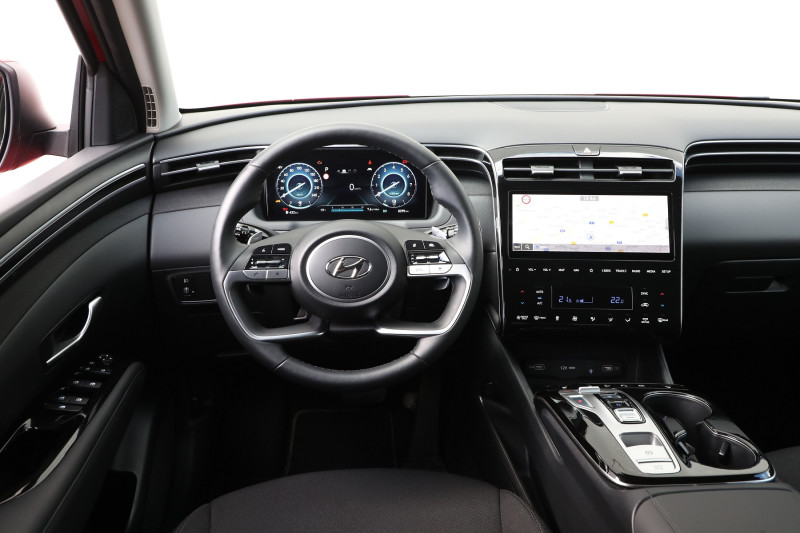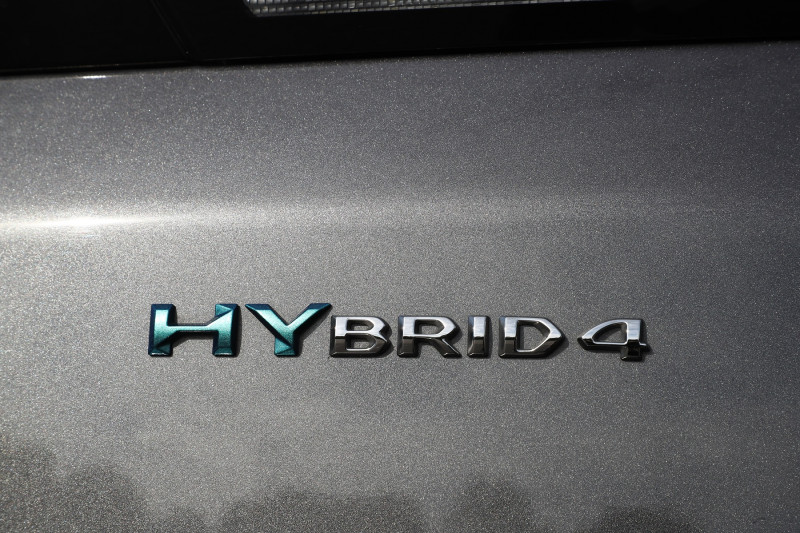Is a plug-in hybrid interesting for you? The four plug-in SUVs we put in Car Review 12/2021 have extensively tested, provide excellent performance, but do not create a vortex in the tank. Which test car offers the finest mix of speed, low consumption and civilisation, the Hyundai Tucson, the Opel Grandland, the Peugeot 3008 or the Volkswagen Tiguan?

One in ten cars sold in the Netherlands is now a plug-in hybrid. In 2020, only one in 25 cars had a combustion engine and an electric motor with a charging cable on board. There is a simple explanation for this enormous advance of the PHEV: many car brands are removing the dirtiest petrol and (especially) diesel version from their program in order to suppress average CO2 emissions. With some brands you can’t even choose more than a PHEV.
The builders of the four SUVs in this test are not yet going that far. The all-new Hyundai Tucson and the recently facelifted Opel Grandland, Peugeot 3008 and Volkswagen Tiguan are still in the price lists with petrol and (excluding Hyundai) diesel engines. However, the question is how long that will take. Most plug-in hybrids are offered in very complete equipment variants, so that the sales prices remain relatively high, despite the modest BPM amount.
The combination of a powerful petrol engine and an electric auxiliary engine delivers good performance and low consumption. In Car Review we have assessed the four test cars on a whole laundry list of parts, but here we look at which car has the best performing and most economical powertrain.
Sign up for the Auto Review and you will automatically receive the most important car news in your email every week!

Hyundai Tucson: not the fastest, but the most economical
The Hyundai Tucson 1.6 T-GDI PHEV has a 180 hp four-cylinder turbo engine with a capacity of 1.6 liters. This is connected to an electric motor, which is good for 91 hp. Together they deliver a system power of 265 hp. The maximum torque is 350 Nm. The engine is coupled to a six-speed automatic transmission. The plug-in hybrid variant of the Hyundai Tucson has four-wheel drive as standard.





Compared to the other three cars in this one, the – far from slow – Hyundai Tucson delivers by far the least performance. From standstill you can reach 100 in 7.5 seconds, its top speed is 191 km/h. Most people find that fast enough. However, the consumption of the Hyundai Tucson with plug is by far the lowest. Hyundai gives an average consumption of 1.4 l/100 km (1 in 71.4), we came to a test consumption of a very neat 5.9 l/100 km (1 in 16.9). The Tucson 1.6 T-GDI PHEV has an electric range of 51 kilometers.

Opel Grandland: with two electric motors
For the plug-in variant of the Grandland, Opel uses technology from the Stellantis shelves. Technically, the car is identical to the Peugeot 3008 and Citroën C5 Aircross Hybrid. In this test, we put the most powerful plug-in variant of the Opel Grandland to the test, whose 1.6-litre four-cylinder turbo engine (200 hp) is assisted by two electric motors (v: 110 hp, a: 112 hp). The combined power is 300 hp, while the maximum torque is no less than 520 Nm. An eight-speed automatic transmission sends the power to the wheels.





With so much horsepower on hand, it’s no surprise that the Opel Grandland Turbo Hybrid 4×4 delivers outstanding performance. The 100th sprint takes only 5.7 seconds, ‘at top’ the car goes no less than 240 km/h. Nevertheless, the fuel consumption remains well within limits: we came to an average of 6.4 l/100 km (1 to 15.6). Although that is of course far removed from the Opel-specified theory consumption of 1.3 l/100 km (1 in 76.9). On a full battery you can drive 37 kilometers emission-free.

Peugeot 3008: the sports car among plug-in SUVs
That’s right: the Peugeot 3008 has exactly the same drive technology as the Opel Grandland Turbo Hybrid 4×4, with exactly the same specifications, exactly the same combined power of 300 hp and identical torque values to the decimal point, with a maximum of 520 Nm. Yet both cars do not deliver the same performance, and the fuel consumption of the Peugeot is slightly different from that of the Opel.





The Peugeot 3008 is an extremely fast car with a sprint time of 5.4 seconds. Its top speed is the same as that of the Opel at 240 km/h. Even though the 3008 HYbrid4 is faster than the Opel, it’s only fractionally thirstier. We recorded an average of 6.5 l/100 km (1 in 15.4) in our test notes. Peugeot itself claims a consumption of 1.3 l/100 km (1 in 76.9), but nobody gets that in practice. At 34 kilometers, the electric range of the 3008 is slightly smaller than that of the Opel.

Volkswagen Tiguan: the golden mean
In terms of performance and consumption, the Hyundai Tucson and the German-French dual unit Grandland/3008 are on two very different tracks. And the Volkswagen Tiguan 1.4 TSI eHybrid? That dives into the gap that the other three test cars leave unfilled. The Tiguan has a 1.4-liter four-cylinder that produces 150 hp. A single electric motor produces an additional 115 horsepower. Together they achieve a combined power of 245 hp and a maximum torque of 400 Nm.





In terms of performance, the Volkswagen Tiguan takes its Korean competitor in tow: in 7.3 seconds you are at 100, its top speed is 205 km/h. In terms of consumption, he joins the Opel and Peugeot on the wrong side of the 6-litre limit, with an average of 6.2 l/100 km. On a full battery, the Tiguan runs fully electrically for 37 kilometers. Unlike the other three test cars, the Volkswagen only has front-wheel drive.
Conclusion
The Opel and the Peugeot are not only lightning fast, they also deliver their excellent performance with a very modest consumption. Those who are not shy about so much speed, but are looking for a car that does not have to assert themselves at the traffic light, should opt for the (not slow at all) Hyundai Tucson. The Volkswagen Tiguan presents itself as a real all-rounder: it is not the fastest and it is also not the most economical of the four, but generally scores excellent points.
